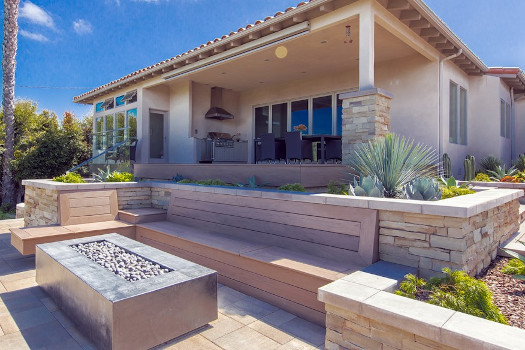Original article by: BUILDER Online
Even building pros can’t tell the difference between premium composite and wood.
With lumber prices stubbornly fixed at near record highs and showing no signs of budging, it’s easy to see why so many home builders and contractors have turned to composite decking materials. And why not? In many cases the price difference with cedar and redwood has vanished. Even the gap with pressure-treated pine is surprisingly small.
Then there’s this telltale story from last year’s IBS Show. Patrick Barnds remembers it well:
“We had a display of wood and composite boards side-by-side. We asked trade pros to pick out the ipe and mahogany boards from the composite equivalents. Over 80% of the time they couldn’t.”
Barnds knows the same comparison 10 years ago, even 5 years ago, was unthinkable. Composite decking aesthetics weren’t ready for prime time. What changed? Technology.“ Builders who recall composite decking from back in the day remember a pricey product that only had a passing resemblance to natural pine, cedar, redwood, and other species. That’s changed,” he reports.

Barnds witnessed the visual revolution firsthand as the senior vice president of product management at The AZEK Company, the parent company to TimberTech, a major composite decking manufacturer. In recent years TimberTech has invested hundreds of millions of dollars to create technology that eliminates unrealistic wood grain patterns and color schemes.
Now it’s all about outdueling Mother Nature herself for subtly, nuanced, and can’t-tell-it-apart visual aesthetics with:
- Finishing technologies that mimic natural wood color schemes.
- Color blending system to create highlights and lowlights similar to wood variations.
- Embossing technology to add tactile grain patterns, including traditional wood grain, wire-brushed, and hand-scraped textures.
Customizable and Faster Installation
Customization is a big trend in decking as homeowners and designers want to express their individuality. This can be achieved by mixing boards of different colors or using boards of multiple widths to mirror the aesthetics of interior wood flooring. Creating customized decks doesn’t necessarily mean more complex installations, which homeowners view as a significant upgrade but costs the same as standard-width boards.

“Home builders and contractors can now transform outside space without bogging down installation or bringing in special installers,” notes Barnds. For example, using on-trend 7-1/4-inch-wide boards creates a dramatic, wide-plank visual that actually speeds up installation for contractors. The larger format reduces the time to install the decking surface by up to 30% while requiring fewer fasteners, compared to a standard 5-1/2-inch plank.
What’s more, breakthrough aesthetics better align with interior wood flooring to seamlessly bring interior designs outside.
Lower Lifetime Cost & Maintenance
Barnds says next-gen composite decking makes no compromises for durability and longevity, either. For example, the TimberTech AZEK line comes with industry-leading 50-year limited fade and stain and limited lifetime warranties. Rotting, warping, and splintering? They’re off the table, too, because TimberTech AZEK boards contain no wood.
Even feet get special treatment. “TimberTech AZEK boards stay up to 30 degrees cooler than other brands, making our decks barefoot-friendly,” he explains.
READ MORE
